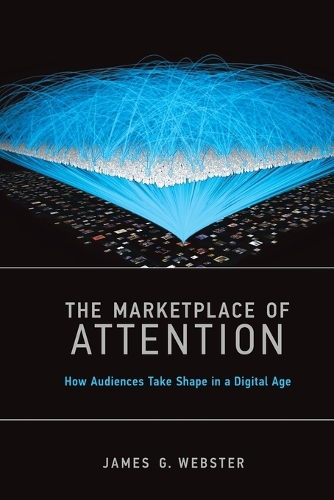
The Marketplace of Attention: How Audiences Take Shape in a Digital Age
(Paperback)
Publishing Details
The Marketplace of Attention: How Audiences Take Shape in a Digital Age
By (Author) James G. Webster
MIT Press Ltd
MIT Press
2nd September 2016
United States
Classifications
Professional and Scholarly
Non Fiction
302.231
Physical Properties
Paperback
280
Width 152mm, Height 229mm, Spine 14mm
Description
How do media find an audience when there is an endless supply of content but a limited supply of public attentionFeature films, television shows, homemade videos, tweets, blogs, and breaking news digital media offer an always-accessible, apparently inexhaustible supply of entertainment and information. Although choices seems endless, public attention is not. How do digital media find the audiences they need in an era of infinite choice In The Marketplace of Attention, James Webster explains how audiences take shape in the digital age. Webster describes the factors that create audiences, including the preferences and habits of media users, the role of social networks, the resources and strategies of media providers, and the growing impact of media measures-from ratings to user recommendations. He incorporates these factors into one comprehensive framework the marketplace of attention. In doing so, he shows that the marketplace works in ways that belie our greatest hopes and fears about digital media. Some observers claim that digital media empower a new participatory culture; others fear that digital media encourage users to retreat to isolated enclaves. Webster shows that public attention is at once diverse and concentrated-that users move across a variety of outlets, producing high levels of audience overlap. So although audiences are fragmented in ways that would astonish midcentury broadcasting executives, Webster argues that this doesn't signal polarization. He questions whether our preferences are immune from media influence, and he describes how our encounters with media might change our tastes. In the digital era's marketplace of attention, Webster claims, we typically encounter ideas that cut across our predispositions. In the process, we will remake the marketplace of ideas and reshape the twenty-first century public sphere.
Reviews
The Marketplace of Attention is a worthy addition to cross-disciplinary shelves. It's lucid, accessible and thoughtfuland in our fast-moving media market, who can ask for more than that
Times Higher EducationJames G. Webster makes important theoretical contributions in this book that will inform a wealth of testable hypotheses about audience choice and the influence of messages in a fragmented, segmented, media environment. His principal contribution may be his cool-headed yet provocative approach. Webster at once offers an exciting characterization of a dynamic marketplace of attention as well as a careful check on theorists and empiricists making broad claims about the dire consequences of media choice or micro-targeting.
The International Journal of Press/PoliticsAuthor Bio
James G. Webster is Professor in the School of Communication at Northwestern University.
